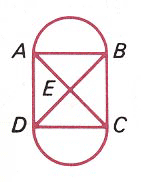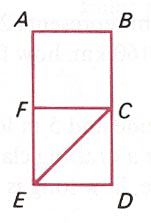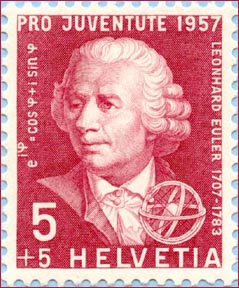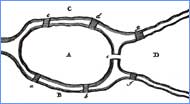Euler Circuit Because all vertices or
nodes are "even," a traversable network may be traced
starting and ending at the same letter. This
illustration starts and ends at A but any of the letters
might have been selected.
|
Euler Path This graph has exactly two
odd vertices, F and E. This
illustration starts at F and ends at
E. We also might have started at E and ended at F.
|
| Euler Paths and Circuits |
|
|
|
|
 Euler
is
one of a number of distingished mathematicians born in
Basel, Switzerland.
 Note the Euler formula for polyhedra. |
| Related material also in
the National Curve Bank: ..//graphtheory/grthelink/grthelink.htm |
|
| Brian Hopkins and Robin J.
Wilson, "The Truth about Königsberg," The College
Mathematics Journal, Vol. 35, No. 3, May 2004, pp.
198-207. [Note: The NCB thanks Hopkins and Wilson for their invaluable historical source and translations.] |
|
| Bell, E. T., Men of Mathematics,
Simon and Schuster, 1937, p. 118. |
|
| Eves, Howard, An Introduction to the
History of Mathematics, 6th ed,. The Saunders
College Publishing, 1990, pp. 460-461. |
|
| Katz, Victor J., A History of
Mathematics, PEARSON - Addison Wesley, 2004, pp.
396-399. |
|

 from Euler's paper of 1736
from Euler's paper of 1736